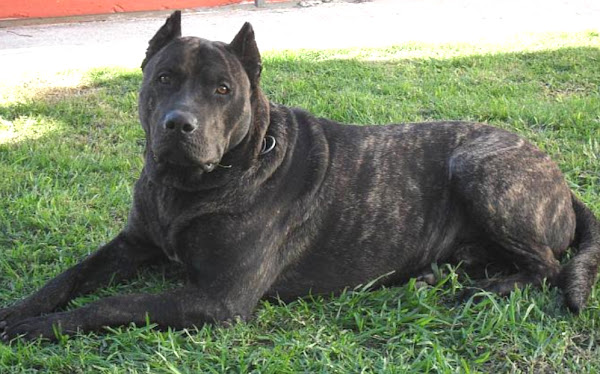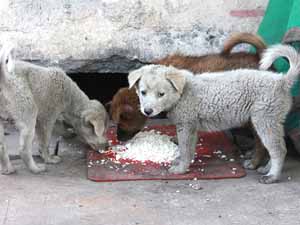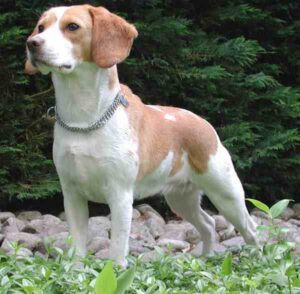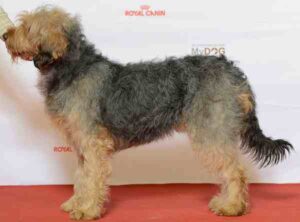The Uruguayan Cimarron dog is a breed of molosser type dog. The word cimarrón in Latin America is used to mean feral, referring to the breed’s history. It is a very beautiful breed with medium to large in size.
As the name suggests, the breed was originated from Uruguay. It is also known by some other names. It’s other names include Cimarron, Uruguayan Cimarron, Cimarron Creole, Maroon Dog, Cerro Largo Dog, Perro Cimarron and Cimarron Dog.
The breed mainly descends from the Alano Espanol and other European dogs brought by early colonizers and released or abandoned.
The dogs adapted to living in the wild in Uruguay and in time became numerous. Attacks on livestock and even humans resulted in the dogs being hunted in the 18th Century, with bounties paid by the government for each dog killed.
However, many dogs remained, especially in the highlands of Cerro Largo. Ranchers in the area would capture and tame the dogs, using them as guard dogs.
The Kennel Club Uruguayo (Uruguayan national kennel club) recognised the Cimarrón Uruguayo after some twenty years of work by fanciers and breeders in documenting the breed. In addition, genetic studies are being done on the breed by the Universidad de la Republica Oriental del Uruguay college of Veterinary Medicine.
The Cimarrón Uruguayo was provisionally recognised by the Fédération Cynologique Internationale on February 21, 2006, and definitively on November 7, 2017 in Group 2, Section 2 Molossoid breeds-Mastiff type. The breed has been exported to the United States, and is recognised there by the United Kennel Club in the Guardian Dog Group.[1]
Uruguayan Cimarron Dog Characteristics
The Uruguayan Cimarron dogs are medium to large in size and are very beautiful. They appear large, muscular and compact. The breed has the general appearance of the large mastiff-type dogs dating back to ancient times, when they were used as fighting dogs by the Greeks.
Their face is slightly narrower and more Labrador-like than heavy mastiff. They also have small drop ears, which are sometimes cropped in their native area, to make them look even more imposing.
They have a short, no nonsense coat with a dense undercoat, which is overlain by short, smooth guard hairs. The usuall color is brindle or pale yellow with a black mask.
Average height of the mature dogs is between 23 and 24 inches at the withers for males, and between 22 and 23 inches for the females. Average live body weight of the mature dogs is between 38 and 45 kg for the males, and between 33 and 40 kg for the females.

Temperament
The breed standard states that the Uruguayan Cimarron dog should have great courage. As with all large dogs, these dogs must be well socialized when they are very young, if it is to be safely kept as a companion.
It is a very friendly dog with children and other animals. These dogs are sometimes used for guarding, hunting and all dog sports in it’s native area.
Being a very smart dog, it has been used for all kinds of jobs, such as rescue or herding. The breed is rather calm and stable and it doesn’t usually bark unless a threat is real.
Lifespan
Average lifespan of the Uruguayan Cimarron dogs is between 10 and 14 years.
Feeding
How much a mature dog eats depends on it’s size, age, build, metabolism and activity level. Dogs are individuals, just like people, and they don’t all need the same amount of food.
The Uruguayan Cimarron dogs are medium to large in size and they are very active. So, their diet should be formulated for a medium to large sized breed with high exercise needs. Consult with a vet in your area for better feeding recommendations.
Caring
Taking good care of the animals is very important for raising Uruguayan Cimarron dogs. You should always keep up with your dog’s regular veterinary checkups to detect any health concerns early.
They will enjoy a large yard or area to run and play. But they can do well in an apartment or flat with enough exercise. The breed is perfect for anyone looking for an exercise or active partner or seeking a guard dog for a farm or ranch.
The Uruguayan Cimarron dogs have high energy and they are intelligent dogs. They need plenty of attention and exercise. Daily walks are crucial as well as mental stimulation such as learning or performing tricks.
As these dogs are commonly used as guard dogs on farms and ranches, it makes sense that these dogs need space to run and play.
The Cimarron Uruguayo does not need special attention in grooming because of their short coat. Brushing is not needed on a daily or even weekly basis. Wash or bathe with gentle shampoo when needed.
Health
The Uruguayan Cimarron dogs are generally healthy. But like all other dog breeds, they are also prone to certain health conditions.
Their common health problems include bloating, hip and elbow dysplasia. Always try to keep good contact with a vet in your area.
| Breed Name | Uruguayan Cimarron |
| Other Names | Also known by some other names such as Cimarron, Uruguayan Cimarron, Cimarron Creole, Maroon Dog, Cerro Largo Dog, Perro Cimarron and Cimarron Dog |
| Breed Size | Medium to large |
| Height | Between 23 and 24 inches at the withers for males, and between 22 and 23 inches for the females |
| Weight | Between 45 kg for the males, and between 33 and 40 kg for the females |
| Good as Pets | Yes |
| Climate Tolerance | All climates |
| Color | The usuall color is brindle or pale yellow with a black mask |
| Lifespan | Between 10 and 14 years |
| Good for Children | Yes |
| Rarity | Common |
| Country/Place of Origin | Uruguay |






